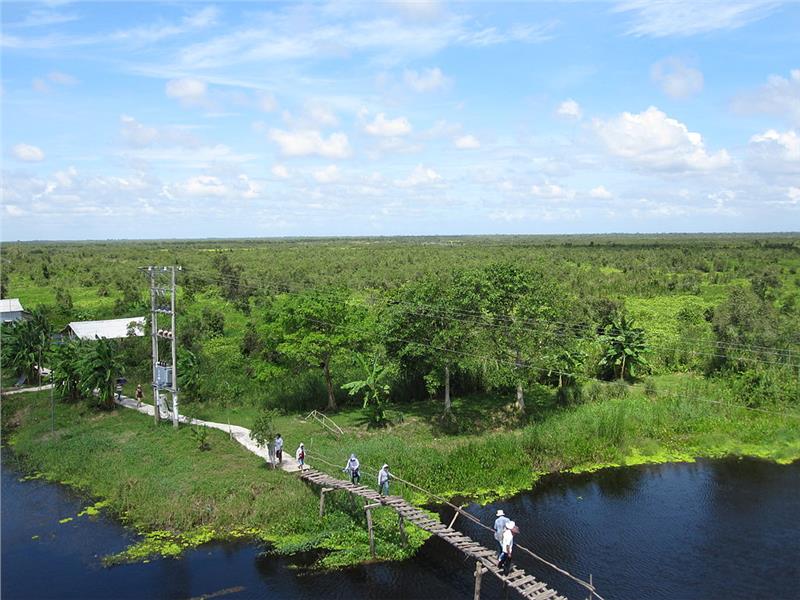The main terrain of Southern Vietnam is plains with two sub-regions including Southeast area and Mekong River Delta area. These areas are the lowest parts in Vietnam. Southeast area is between 100 meter and 200 meter high above sea level; and this area has a number of low hills and mountains in the west near Cambodia. While, Mekong River Delta area is about 5 meter high above sea level. As not being prevented by Truong Son Mountain range like Central Vietnam, the weather in Southern Vietnam is not affected by northeast monsoon from the north or Foehn wind from Laos. Yet, there are two distinct seasons in the region: rainy season and dry season like central part of Vietnam, though differences in temperature and humidity.

Southern Vietnam is distinguished by tropical equatorial climate with high temperatures and virtually remains change all year round. The seasonal differentiation is relatively profound and consistent with the operation of the southwest monsoon. The average rainfall is abundant with about 1500-2000 mm. The diurnal temperature range between months is low and moderate all year round. The annual humidity ranges from 80% to 82%. Climate in Southern Vietnam is described with two main seasons: dry season and rainy season. The rainy season lasts from May to November, while the period from December to April is dry season.

Southern Vietnam weather is different from that in other parts of Vietnam. As being affected by southeast monsoon from Gulf of Thailand, the region is not prevented by mountains range, thus, the climate is characterized by cool rain and wet. Let’s take Ho Chi Minh as an example. Ho Chi Minh City usually witnesses monsoon climate in two seasons. During the rainy season, heavy rains are expected to happen almost every afternoon, thus, streets in and near Saigon often witness small floods and tides. The rainfall season begins in May and often ends in October. Ho Chi Minh City becomes hot from March. From April, the temperature rises gradually and becomes hotter and hotter; and rains occur in Saigon all year round. From middle September, the rainfall is relatively high accounting for 86% of total year-round rainfall amount. In dry season, downpours also occur, but bring coolness. Downpour is not very popular in February. Over the year, the common form of precipitations is light rain, moderate rain and thunderstorm. Light rain happens from July and it is observed during 15% of days in the month. The relative humidity that can be seen in this city ranges from 46% to 98% depending on the seasons. The air is completely dry in the beginning of March. Vietnam weather in the south has temperature ranging between 25 - 35°C year round. As the position of the region is near equator, local people do not have a chance to enjoy the cold like in the north of Vietnam. Yet, because the diurnal temperature range is low, climate in this region is quite similar over the months in a year.
